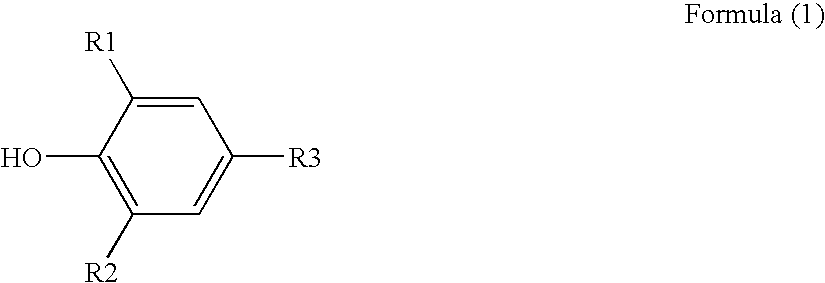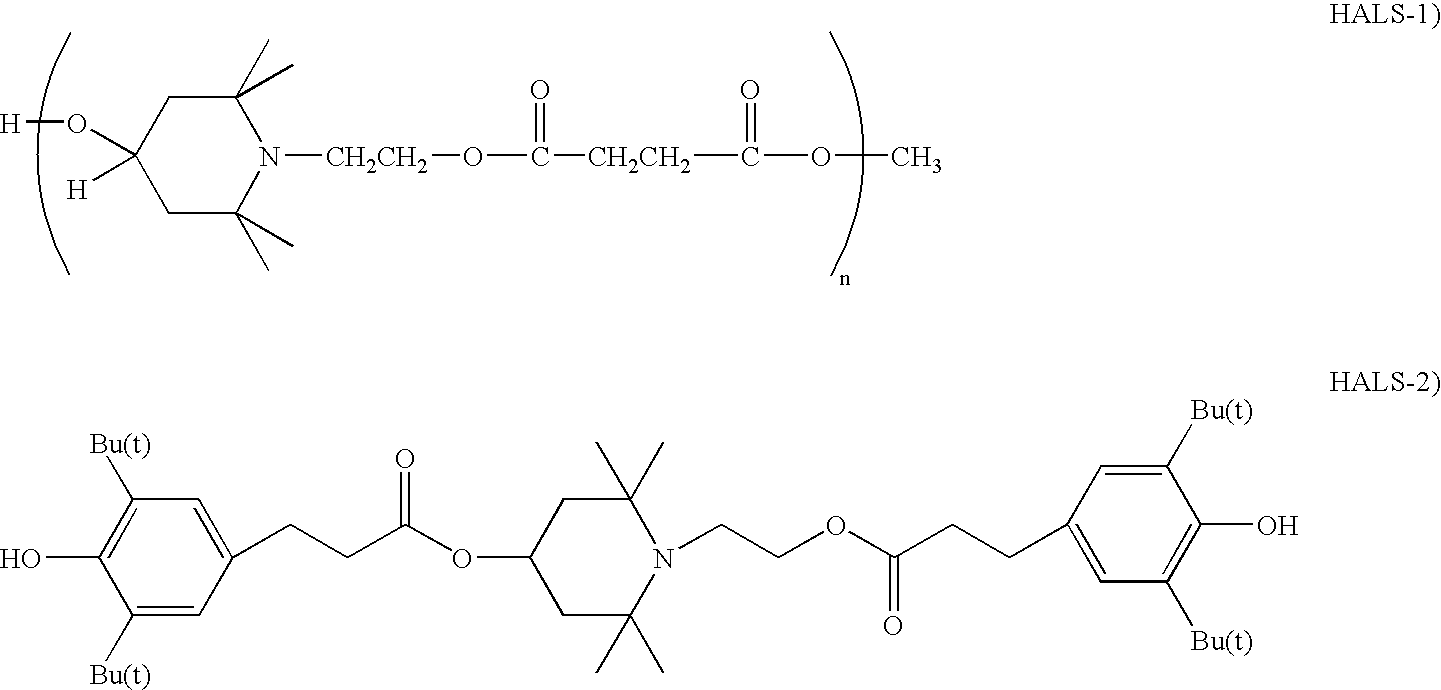Method for manufacturing cellulose ester film, and cellulose ester film, optical film, polarizing plate and liquid crystal display device using the same
a technology of cellulose ester and cellulose ester, which is applied in the direction of absorbent pads, bandages, transportation and packaging, etc., can solve the problems of affecting the performance of lcd, the cost required to recover solvent is an extremely large negative factor, and the inability to find substitutes exhibiting sufficient solubility, etc., to achieve excellent optical properties and dimensional stability, reduce the manufacturing load and installation load associated with drying and recovery of essential solvents
- Summary
- Abstract
- Description
- Claims
- Application Information
AI Technical Summary
Benefits of technology
Problems solved by technology
Method used
Image
Examples
example 1
[Preparation of Cellulose Ester Film Samples 1-1 to 1-17]
[0168] Cellulose Ester C-1 (CAP-482-20 manufactured by Eastman Chemical Company) was dried in air for 2 hours at 130° C. and at ambient pressure and then cooled to room temperature. 1.0 part by weight and 0.5 part by weight of compound 4 and Sumilizer BP-76-respectively were added to the cellulose ester. The mixture was melted by heat to a melting temperature of 230° C. and then molded by melt extrusion using a T die, and then stretched at a stretching ratio of 1.2×1.2 at 160° C. As a result, a cellulose ester film-sample 1-1 having a thickness of 80 μm was obtained. The water content was measured by a heat-drying type moisture analyzer, MOISTURE ANALYZER MX-50 manufactured by A&D Company, Ltd.
[0169] Inventive cellulose ester film samples 1-2,1-3, 1-6, 1-7, 1-8, 1-11-16, and 1-17, and comparative cellulose ester film samples 1-4,1-5, 1-9,1-10 and 1-13 were prepared using exactly the same method except that the type of cellul...
example 2
[Preparation of the Coating Composition]
[0178] The following coating compositions were prepared. (Antistatic layer coating composition (1))
[0179] Polymethyl metacrylate (weight average molecular
weight: 550,000; Tg: 90° C.)0.5partPropylene glycol monomethyl ether60partsMethyl ethyl ketone16partsEthyl lactate5partsMethanol8partsConductive polymer resin P-10.5part(0.1-0.3 μm particle size)
Conductive Polymer Resin P-1
[0180] (Hard Coat Layer Coating Composition (2))
Dipentaerythritol hexaacrylate monomer60partsDipentaerythritol hexaacrylate dimer20partsDipentaerythritol hexaacrylate trimer and20partsgreater componentsDiethoxybenzophenone photoreaction initiator6partsSilicone surface active agent1partPropylene glycol monomethyl ether75partsMethyl ethyl ketone75parts
[0181] (Anti-Curl Layer Coating Composition (3))
Acetone35partsEthyl acetate45partsIsopropyl alcohol5partsDiacetyl cellulose0.5partSuperfine particles of silica 2% acetone dispersion0.1part(Aerosil 200 V manufactured by...
example 3
[0194] Cellulose ester film sample 3-1 was prepared in the same manner as the cellulose ester film sample 1-1 of example 1, except that 0.5 parts by weight of Tinuvin 770 was used in place of 0.5 parts by weight of Sumilizer BP-76. Also inventive cellulose ester film samples 3-2, 3-3, 3-6, 3-7, 3-8, 3-11, 3-12, 3-14, 3-15, 3-16, and 3-17, and comparative cellulose ester film samples 3-4, 3-5, 3-9, 3-10 and 3-13 were prepared using the same method except that the type of cellulose ester, the water content, the type of additive and the amount of additive were changed as shown in Table 3. The evaluation was also carried out in the same manner as example
TABLE 3WaterAmountAmountCellu-Content(parts(partsSamplelose(weightbyHinderedbyNo.Ester%)Plasticizerweight)amineweight)Remarks3-1C-11.0Compound 41Tinuvin0.5This770invention3-2C-11.0Compound 45Tinuvin0.5This770invention3-3C-11.0Compound 430Tinuvin0.5This770invention3-4C-11.0Compound 40.5Tinuvin0.5Comparative770example3-5C-11.0Compound 45...
PUM
 Login to View More
Login to View More Abstract
Description
Claims
Application Information
 Login to View More
Login to View More - R&D
- Intellectual Property
- Life Sciences
- Materials
- Tech Scout
- Unparalleled Data Quality
- Higher Quality Content
- 60% Fewer Hallucinations
Browse by: Latest US Patents, China's latest patents, Technical Efficacy Thesaurus, Application Domain, Technology Topic, Popular Technical Reports.
© 2025 PatSnap. All rights reserved.Legal|Privacy policy|Modern Slavery Act Transparency Statement|Sitemap|About US| Contact US: help@patsnap.com



